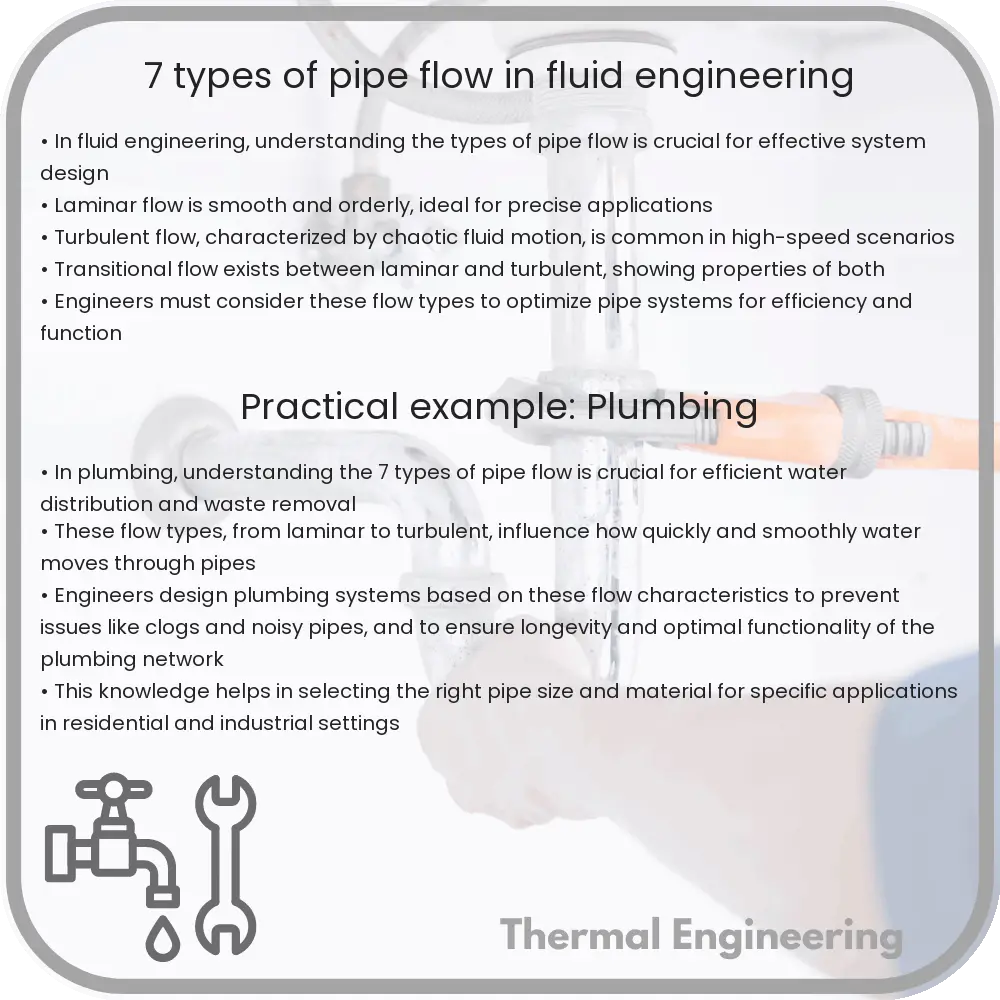Learn about the seven main types of pipe flow in fluid engineering, crucial for system design in various industries.

Understanding the 7 Types of Pipe Flow in Fluid Engineering
In fluid engineering, understanding how fluids flow through pipes is crucial for designing efficient systems in various applications, including water supply, oil and gas transport, and chemical processing. Flow can be classified into different types depending on several factors such as the fluid’s speed, its viscosity, the pipe’s diameter, and the overall pressure of the system. Here, we explore the seven main types of pipe flow which are essential for engineers and designers.
1. Laminar Flow
Laminar flow, or streamline flow, occurs when a fluid flows in parallel layers with no disruption between the layers. This type of flow is characterized by smooth paths of the particles of the fluid, occurring typically at lower velocities. The condition for laminar flow can be defined using the Reynolds number (Re), calculated by \( \text{Re} = \frac{\rho \cdot v \cdot D}{\mu} \) where ρ is the fluid density, v is the flow velocity, D is the diameter of the pipe, and μ is the dynamic viscosity of the fluid. Laminar flow is observed when Re < 2,000.
2. Turbulent Flow
Turbulent flow is characterized by chaotic and erratic changes in pressure and velocity within the fluid. Unlike laminar flow, the fluid particles undergo irregular fluctuations and mixing. Turbulence typically occurs at high velocities and large pipes, with a Reynolds number greater than 4,000.
3. Transitional Flow
This flow type is a mix between laminar and turbulent flow. In transitional flow, both laminar flow at the core and bursts of turbulence occur intermittently. This transition typically happens when the Reynolds number is between about 2,000 and 4,000.
4. Compressible Flow
Compressible flow occurs when the density of the fluid changes significantly along with the flow. This typically happens when fluids are moving at high speeds, close to or exceeding the speed of sound. Such conditions are relevant in high-speed jet engines and aerodynamics.
5. Incompressible Flow
Incompressible flow describes fluid movement where its density is constant. Most liquids (like water and oil) can be treated as incompressible fluids under ordinary conditions. Incompressible flow assumptions simplify the analysis and calculations in many engineering applications.
6. Steady Flow
A steady flow occurs when the velocity of the fluid at a particular point does not change over time. Whether the flow is laminar or turbulent, if the conditions remain constant, it is considered steady. This is an ideal scenario often used in engineering calculations.
7. Unsteady Flow
Opposite to steady flow, unsteady (or transient) flow happens when the fluid’s velocity at a point changes as time progresses. Situations causing unsteady flow include changes in the fluid velocity, fluid source (pump operation changes), or system configurations (valve manoeuvring).
Understanding these types of flow helps in the computational fluid dynamics (CFD) modeling, design, and optimization of systems involving fluid transport. By choosing the appropriate flow model, engineers can predict how fluids will behave in real-world scenarios, ensuring safety, efficiency, and operational success.